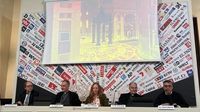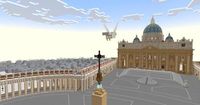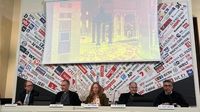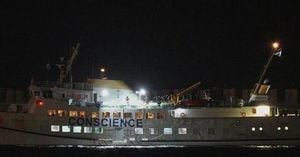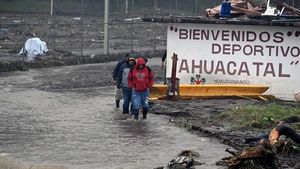On March 18, 2025, the Vatican unveiled its latest initiative in digital education through the launch of "Peter Is Here," a new interactive video game embedded within the Minecraft Education platform. This collaboration between Minecraft Education and the Fabbrica di San Pietro offers a unique opportunity for students to explore the Vatican Basilica in a digitally reconstructed environment, enriching their learning experience about one of the world's most iconic religious sites.
The project builds on the previous "La Basilica di San Pietro: AI-Enhanced Experience" that was presented in November 2024. Cardinal Mauro Gambetti, the archpriest of St. Peter's Basilica, emphasized the significance of this venture, stating that it blends humanism and technology to make the Basilica more accessible to audiences worldwide. "This experience fosters a genuine immersion in knowledge and reflection," he remarked during the launch event.
According to Gammetti, the aim of "Peter Is Here" extends beyond mere education. He envisions the game as a bridge that connects the historical and spiritual significance of the Basilica with modern technology. "Through artificial intelligence, we want to bring the Basilica closer to people and foster a spiritual experience," he noted, linking the initiative to the upcoming festivities related to the feast of Saint Joseph.
Brad Smith, Vice Chairman and President of Microsoft, expressed his enthusiasm about the initiative, pointing out that it marks a significant expansion of Microsoft's partnership with the Vatican. He stated, "This project is another major step forward, leveraging AI tools to uncover the stories behind the Basilica's architecture and art, allowing others to engage with it on a deeper level." Smith believes the game provides an innovative way for students to learn through exploration and interaction.
In addition to engaging gameplay, the project includes specially developed educational tools. Microsoft utilized various technologies, including Copilot for historical research and Designer for asset conceptualization. The use of Microsoft Visual Studio and GitHub Copilot facilitated the creation of the game's mechanics, while GPT-4.0 from Azure OpenAI guaranteed the appropriateness of content for its intended audience.
The launch of "Peter Is Here" will see it integrated into educational curricula in Catholic schools globally, particularly in Italy. This effort aims to harness interactive technologies to keep students engaged while learning about history and cultural heritage. Mauro Antonelli, Head of Technical Secretariat for the Ministry of Education and Merit, remarked at the launch that this initiative creatively showcases how technology can serve educational purposes.
Pedagogical value has emerged as a central theme surrounding the game. Padre Enzo Fortunato, President of the Pontifical Committee for the World Children’s Day, desires that "Peter Is Here" becomes the official game for the second World Children’s Day scheduled for September 2026, intending to engage families and foster a communal quest for knowledge. He envisions a day where children and parents participate together in exploring the Basilica.
Students from the Istituto Massimo showcased gameplay during the launch, sharing insights from their experiences exploring the virtual worlds recreated within the game. They demonstrated how the platform encourages students to become actively involved in learning through gameplay, thereby enhancing their understanding of the Basilica's history and architecture.
The game's design also focuses on critical educational themes. Gammetti noted that gamers could engage in creative architectural interventions, uncover the Basilica's history, and better understand its deeper meanings. He draws a parallel to a passage from the Book of Proverbs, emphasizing that wisdom plays a crucial role in creation—encouraging players to connect the material and spiritual realms during their gaming experience.
Allison Matthews from Microsoft highlighted the limitless potential of Minecraft as a platform for learning. She described it as a "virtual world without limits," suggesting that this initiative not only broadens the students' horizons but also promotes inclusivity and creativity within educational practices.
Looking forward, there is hope that more educators will embrace this innovative approach to teaching. The initiative illustrates how gaming can transform conventional educational paradigms, creating more engaging and interactive learning experiences. Cardinals and officials from the Vatican have remarked on the potential benefits this project holds for millions of students, enabling them to delve into the Basilica's exceptional heritage.
As this educational gaming initiative unfolds, the intersection of faith, art, and technology is set to inspire generations. The Vatican views this project not just as a game but as a meaningful tool to spark curiosity and foster learning among the young. By integrating cultural heritage into an interactive platform, the Vatican is encouraging exploration that leads to deeper understanding and appreciation of its spiritual and historical significance.
The timing of the launch, ahead of the anticipated Jubilee 2025—which is expected to attract 30 million additional tourists—is not coincidental. This initiative aims to enhance global knowledge about the Basilica while inviting a broader audience into its rich narrative weaving together faith and culture.
